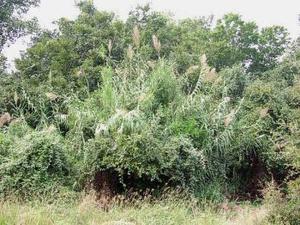Border securityGiant weed complicates border security
To add to the difficulties of patrolling the U.S.-Mexico border, an invasive species of giant weeds has infested rivers throughout the southwest, particularly the Rio Grande in Texas, providing dense cover for illegal activities

Densely packed and growing to 30 foot heights, the cane provide cover for illegal activities, including human and drug smuggling // Source: albufera.com
To add to the difficulties of patrolling the U.S.-Mexico border, an invasive species of giant weeds has infested rivers throughout the southwest, particularly the Rio Grande in Texas, providing dense cover for illegal activities.
The weed, commonly known as Carrizo Cane in Texas, is a bamboo-like plant that grows rapidly to heights of more than thirty-two feet. The cane has proven to be so problematic DHS recently began creating a plan to control the giant plants’ spread.
Determining the exact areas where the weeds have taken root is difficult as they are often in inaccessible regions and difficult to distinguish from other vegetation by air, but researchers recently undertook a careful study of the plants using aerial photography to identify areas the giant reed has infested along the border. The study is the first accurate estimation of where the weeds are and will help land owners and conservationists by allowing them to estimate water usage and economic losses.
In addition to providing cover for smugglers along the border, the non-native weeds reduce bio-diversity and consume large amounts of water to support its rapid growth rate. The weed’s leaves contain toxic or unpalatable chemicals, which have driven off native insects and herbivores who would otherwise naturally help keep the plant’s growth in check.
One biological extermination method has been tested with the introduction of the eurytomid wasp, which was released in a controlled area. The wasp has proven to be an enemy of the giant reed and appears unlikely to hurt native plants.
The government and landowners are still reviewing their options on how to control this invasive plant species, so in the meantime smugglers will continue to have an unlikely ally in their efforts to sneak across the border.
